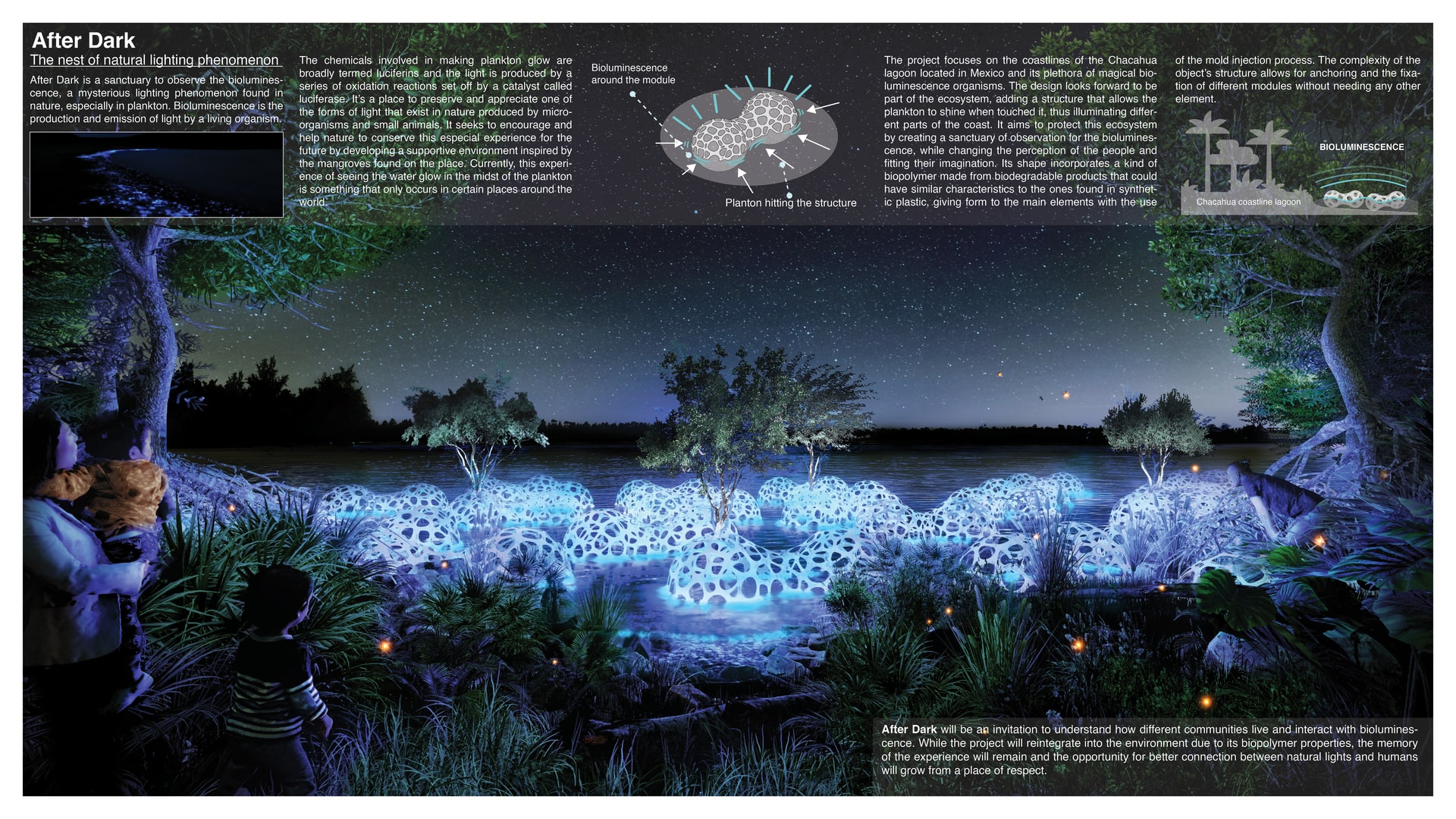Project Description
After Dark is a sanctuary to observe the bioluminescence, a mysterious lighting phenomenon found in nature, especially in plankton. Bioluminescence is the production and emission of light by a living organism. The chemicals involved in making plankton glow are broadly termed luciferins and the light is produced by a series of oxidation reactions set off by a catalyst called luciferase. It’s a place to preserve and appreciate one of the forms of light that exist in nature produced by microorganisms and small animals. It seeks to encourage and help nature to conserve this especial experience for the future by developing a supportive environment inspired by the mangroves found on the place. Currently, this experience of seeing the water glow in the midst of the plankton is something that only occurs in certain places around the world. The project focuses on the coastlines of the Chacahua lagoon located in Mexico and its plethora of magical bioluminescence organisms. The design looks forward to be part of the ecosystem, adding a structure that allows the plankton to shine when touched it, thus illuminating different parts of the coast. It aims to protect this ecosystem by creating a sanctuary of observation for the bioluminescence, while changing the perception of the people and fitting their imagination. Its shape incorporates a kind of biopolymer made from biodegradable products that could have similar characteristics to the ones found in synthetic plastic, giving form to the main elements with the use of the mold injection process. The complexity of the object’s structure allows for anchoring and the fixation of different modules without needing any other element. After Dark will be an invitation to understand how different communities live and interact with bioluminescence. While the project will reintegrate into the environment due to its biopolymer properties, the memory of the experience will remain and the opportunity for better connection between natural lights and humans will grow from a place of respect.
